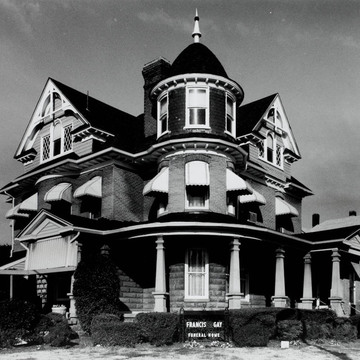You are here
Chesapeake (South Norfolk) Historic District
South Norfolk originated as a streetcar suburb of Norfolk, became an independent town in 1919, and then in 1963 joined Norfolk County in forming the City of Chesapeake. South Norfolk became known as Chesapeake. This area contains the highest concentration of historic structures in the City of Chesapeake and retains a distinct identity. The residential neighborhoods along Chesapeake, Rogers, and D streets are characterized by single-family dwellings uniformly set back from the street on well-shaded lots that were originally 25 feet in width. Houses represent the usual variety of pattern-book styles from 1880–1920. An exuberant example of the Queen Anne style can be seen in the two-and-one-half-story RogersCuthrell House ( ST1.1) (c. 1900; 1146 Rogers Street), which utilizes concrete block on the first story. The source for the design may be Knoxville, Tennessee, architect George P. Barber's various publications. The usual tower is attached, while at ground level, the porch is supported by classically inspired tapered columns.
The Dorothy Truitt Junior High School (South Norfolk High School) (1929, Benjamin F. Mitchell and Randolph, Cooke and Van Leeuwen; 1100 Holly Street, corner of Holly and Rogers streets) is a tame neoclassical design, of brick with almost flush cast stone details: water table, wall niches, pilasters, and entrance surrounds.
Writing Credits
If SAH Archipedia has been useful to you, please consider supporting it.
SAH Archipedia tells the story of the United States through its buildings, landscapes, and cities. This freely available resource empowers the public with authoritative knowledge that deepens their understanding and appreciation of the built environment. But the Society of Architectural Historians, which created SAH Archipedia with University of Virginia Press, needs your support to maintain the high-caliber research, writing, photography, cartography, editing, design, and programming that make SAH Archipedia a trusted online resource available to all who value the history of place, heritage tourism, and learning.














